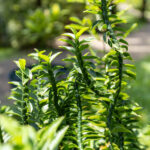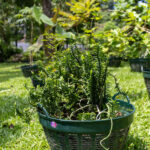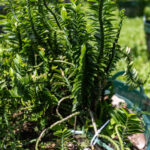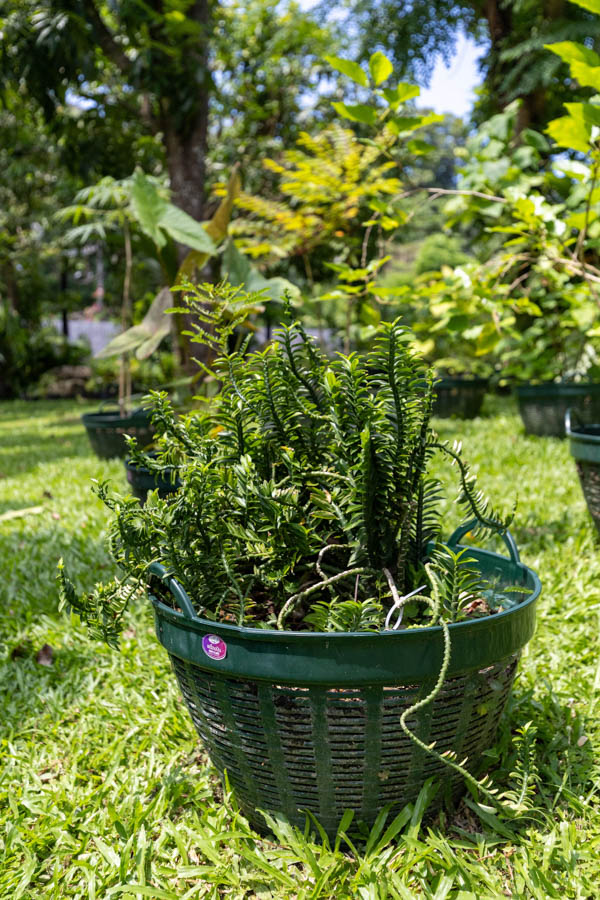พญาไร้ใบ (Phaya Rai Bai)
Family: Euphorbiaceae
Euphorbia tithymaloides, commonly known as Devil’s Backbone, is a semi-succulent shrub recognized for its distinctive zigzag stems and glossy green leaves. Native to Central America, it has adapted well to tropical Asia and is valued both for its sculptural form and traditional medicinal use. The plant’s milky sap, typical of the Euphorbia genus, should be handled carefully as it can irritate the skin and eyes.
Botanical Characteristics
This species grows to around 1–2 meters tall, forming upright, fleshy, green stems that curve in alternating segments, creating a spine-like pattern. The small, thick leaves grow alternately along each ridge, giving the plant a rhythmic, architectural appearance. It occasionally produces small red bracts at the stem tips. The latex sap is mildly toxic and characteristic of its family.
Use in Thai Traditional Medicine
In Thai traditional medicine, พญาไร้ใบ (Phaya Rai Bai) is used externally to treat fungal infections, warts, and other minor skin irritations. The sap is diluted and applied topically with great care due to its strength. The plant is sometimes associated with protective energy and endurance in Thai folklore, representing flexibility and resilience. Internal use is strongly discouraged because of the plant’s toxic compounds.
Cultivation Notes
Euphorbia tithymaloides thrives in full sunlight and well-drained soil. It is drought-tolerant and well suited to tropical climates, requiring minimal maintenance. Propagation by stem cuttings is easy, and pruning helps maintain compact, upright growth. In the KBE Thai Medicinal Herb Garden, this species serves as a teaching example of how form and caution coexist in nature.
Historical Context
Though native to the Americas, the species spread throughout Asia through ornamental and medicinal exchange. In Thailand, it is cultivated as both a garden curiosity and a medicinal plant, symbolizing how healing knowledge travels across cultures while adapting to new environments.
Disclaimer: This information is provided for educational and historical purposes only. It is not intended as medical advice. Always consult a qualified healthcare professional before using any herbal preparation.




